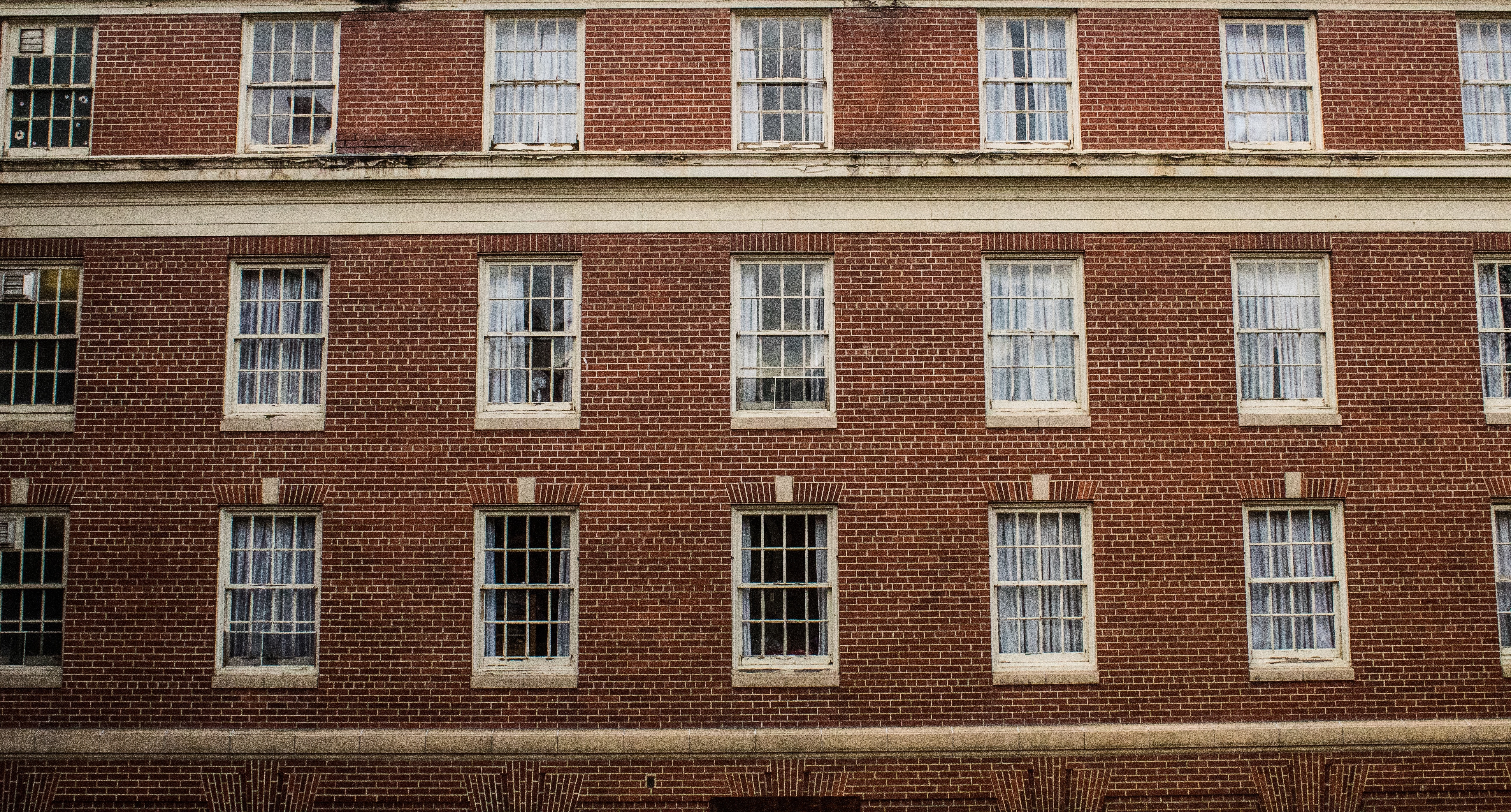Students at US colleges and universities have several options for housing accommodations.
Dorms and Residence halls
If the school you attend has dorms or residence halls, you have the option of living on campus. As part of a “Room and Board” package, you can be assigned a room and, usually, one or more roommates. These facilities are designed especially for student housing. Rooms will include a bed, desk, chair, dresser, and closet space, at minimum. Depending on the campus, some set ups include kitchenettes, bathrooms, and living areas in each section. Others only offer bedrooms with residents relying on a meal plan in the school cafeteria for meals and sharing one living space and several bathrooms per floor.
Some of the benefits of dorm/residence living include the easy access to classes, libraries, and campus activities, as well as daily interaction with other students. Some of the disadvantages might include the constant activity, lack of privacy, and greater challenge in finding a quiet place to study or sleep.
Family Housing
Some campuses provide housing on or near campus for married students and their families at a lower cost than comparable apartments not affiliated with the school.
Rooms for Rent
Especially in areas around colleges and universities, some homeowners rent out rooms in their homes to students. Usually the student has at least a bedroom for their own use, and depending on the situation, sometimes the whole lower level, or another area of the house. Generally, the family shares the kitchen and laundry facilities with the student, but sometimes the area for rented will have its own kitchenette. Obviously, this kind of living arrangement will mean sharing at least part of your life with the owner. It can provide opportunities to practice your English, learn about the area, and participate in some activities that you might not otherwise know about. Rooms for rent can usually be found by checking out posted notices around campus, checking local online sources such as craigslist.com, or asking at the Student Services center for possibilities.
Apartments
Many students in the US rent apartments. Apartments often offer features such as laundry facilities, parking spaces, tennis courts, community areas, and swimming pools. Depending on your needs, and whether you share the apartment with other students, you can find apartments with one to three bedrooms and one or two bathrooms. Unless you decide to rent a studio or efficiency apartment, the space will include a kitchen and living room. Efficiencies or studios offer much less space because they combine the living and sleeping areas into one room, and therefore, rent for less money.
Apartments located near campus tend to cost more to rent than apartments farther from campus. Apartment regulations, established by city authorities, will limit the number of people permitted to live in each apartment.
Homes
Sometimes several students will join together to rent a house. Unless you share the expenses among three or four other students, houses tend to cost more than most students can afford. In a house, the cost of utilities (heat, electricity, water, and garbage removal) will usually run higher, and residents usually have to maintain the yard. As with apartments, houses closer to campus usually cost more, and the number of people permitted to live in them may be limited.
For information about on-campus dormitories and family housing, contact the International Student Office, Student Services Office, or Campus Housing Agency at your campus.
Some schools will offer access to databases of available housing above and beyond what they have available on campus. They might list available rooms in homes, nearby apartments, and houses for rent. Of course, depending on how well they maintain the listings, the information may or may not be current or helpful.
For off-campus housing, these tips will help you get started looking for an apartment or house:
Buy a map of the town or area around your university. This will allow you to get familiar with the school’s proximity (nearness) to various housing options.
Check the online Classified Ads maintained by your university or by the local newspaper for rooms or rental properties in the area.
Inquire with school representatives about any housing database they may have.
Use Google to look for online listings of housing in your area. Some popular sources for housing include Craigslist.org, Apartments.com and Rentals.com. While these sites offer you a glimpse into what you might find available in the area, be careful about committing to a place without meeting the landlord and/or seeing the housing with your own eyes.
Walk or drive through a particular neighborhood or section(s) of town to locate “For Rent” or “Vacancy” signs.
Read an Apartment Shopper’s Guide or other publications that provide information on properties for rent. These guides can be found in convenience stores or grocery stores.
Whenever possible, begin your inquiries into housing as early as you can after choosing a particular university. Housing in areas near a university campus stay in high demand and are filled up very quickly.

